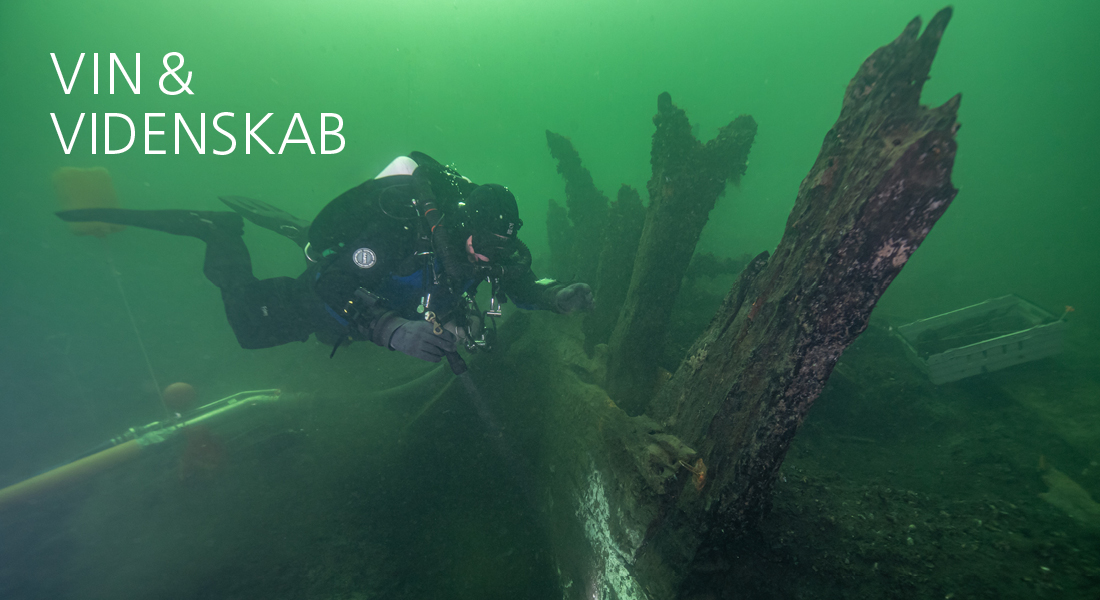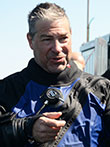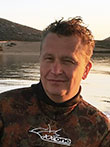
Arkæologi under havet
Foredrag med Vin & Videnskab
BRENDAN FOLEY (USA) Marinarkæolog, udgravningsleder
BJØRN LOVÉN Marinarkæolog, udgravningsleder
To internationalt anderkendte marinarkæologer, begge udgravningsledere, vil tage os med under overfladen og fortælle om to uhyre spændende arkæologiske undersøgelser på havets bund, der foregår netop i disse år.
Brendan Foley (USA), der er specialist i brugen af avancerede metoder og teknologier til marinarkæologiske undersøgelser, skal berette om udgravningen af det dansk-norske flagskib Gribshunden, der sank ud for Blekinge i 1495 med Kong Hans ombord.
Bjørn Lovén, der i mere end 20 år har ledet marinarkæologiske udgravninger i Grækenland, vil tage os med tilbage til det 10. – 5. århundrede f.Kr. og fortælle om udgravningerne af Europas tidligste handelshavn, Lechaion, samt Athens første krigshavn.
Til arrangementet serveres et glas vin (inkluderet i prisen).
NB: Brendan Foleys foredrag vil være på engelsk.
PROGRAM

Gribshunden: The ship that changed the world
v./ BRENDAN FOLEY (USA)Marine archaeologist, Department of Archaeology and Ancient History, Lund University; principal investigator of the excavation of Gribshunden
The royal Danish-Norwegian flagship Gribshunden or Gryffen was launched in 1485 as one of the earliest purpose-built warships in northern Europe. After a decade in active service, the ship caught fire and sank in 1495. The loss occurred while King Hans was en route to a political summit in Sweden, where he expected to achieve his ambition of re-establishing the three-nation Kalmar Union. Hans uniquely employed the vessel as his “floating castle”, combining hard and soft power functions into a mobile seat of government. Recent and ongoing excavations have revealed the ship’s innovative structure, a fusion of Mediterranean and northern European styles similar to the period’s ships of global exploration. Within these wooden ramparts, archaeological excavation illustrate the ship’s military purpose through martial artifacts including handguns, nine crossbows, and the artillery battery. Soft power is reflected in coins, artwork, exotic imported spices, and other prestige consumables. Combined with archival material, scientific analyses of the artifact assemblage deliver deep insight into the king and the people aboard the ship, and the late medieval world through which they traveled.
Prior to coming to Lund University in 2017, Brendan Foley was a Research Specialist in the Deep Submergence Laboratory at Woods Hole Oceanographic Institution in the USA, and a Lecturer at the Massachusetts Institute of Technology. His PhD from MIT is in the History and Archaeology of Technology, complementing a Master’s degree in Maritime Archaeology from University of Southampton and another in Social and Economic History from Tufts University.
Brendan specializes in the application of advanced methods and technology to archaeology, particularly submerged sites. He has directed several underwater archaeological projects: surveys of ancient shipwrecks by Autonomous Underwater Vehicle in the Aegean; six years of excavation by technical diving on the Antikythera Shipwreck in Greece; and underwater recoveries of human remains from World War II aircraft for the U.S. Department of Defense. His current project is the excavation of the royal Danish flagship, Gribshunden, lost off Blekinge in 1495.

Europas Vugge
v./ BJØRN LOVÉNMarinarkæolog, udgravningsleder, seniorforsker v. Det Danske Institut i Athen
I dag er 83 procent af jordkloden dækket af verdenshavene, og flere antikke havnebyer omkring Middelhavet er allerede enten helt eller delvis druknet. Danske marinarkæologer udgraver to af antikkens vigtigste havnebyer: Korinths hovedhavn Lechaion og Athens flådebaser i Piræus. Bjørn Lovén vil i dette foredrag præsentere dugfriske resultater fra Europas tidligste handelshavn i Lechaion, hvorfra grækerne i slutningen af det 8 årh. f.Kr. drog mod vest og koloniserede områder i Italien og Sydfrankrig – Europas spæde begyndelse; og fortælle om Athens første krigshavn bygget under Perserkrigene i begyndelsen af det 5 årh. f.Kr.
BJØRN LOVÉN har en MA i klassisk arkæologi fra Aarhus Universitet og ph.d. fra University of London, Royal Holloway. Han har mere end seks års felterfaring med udgravning af sunkne byer og skibsvrag og er primært specialiseret i antikke flådebaser og handelshavne. I mere end 20 år har han i Grækenland ledet udgravningerne af to af Antikkens tre vigtigste havne, Athens flådebaser i Piræus (2000–†, primært finansieret af Carlsbergfondet) og Korinths hovedhavn Lechaion (2013–†, finansieret af Augustinus Fonden og Carlsbergfondet).
Billetpriser for Vin & Videnskab
Almindelig billet:
150 kr. (+ gebyr)
Studerende:
110 kr. (+ gebyr)
Studiekort skal fremvises i indgangen sammen med billetten.
Børn og unge (op til 17 år):
110 kr. (+ gebyr)
Billet for årskortholder:
110 kr. (+ gebyr)
Der kan købes én billet pr. årskort.
Kortet skal fremvises i indgangen sammen med billetten.
Særligt for årskort DUO:
Med årskort DUO kan du købe to billetter af typen 'billet for årskortholder' og tage en gæst med til foredrag.
Kontakt
Har du spørgsmål, er du velkommen til at sende en mail til vinogvidenskab@snm.ku.dk.
